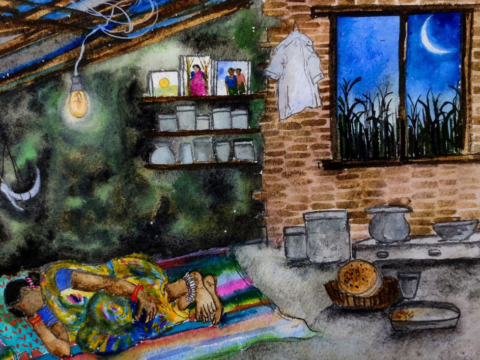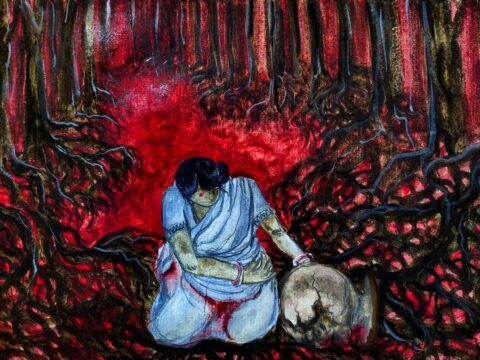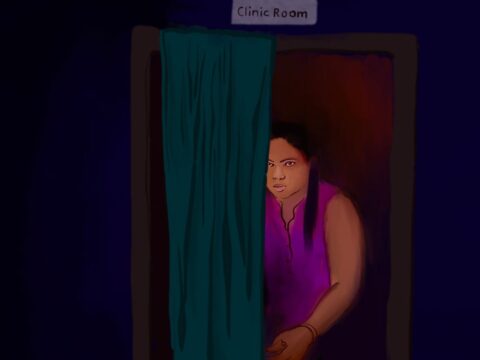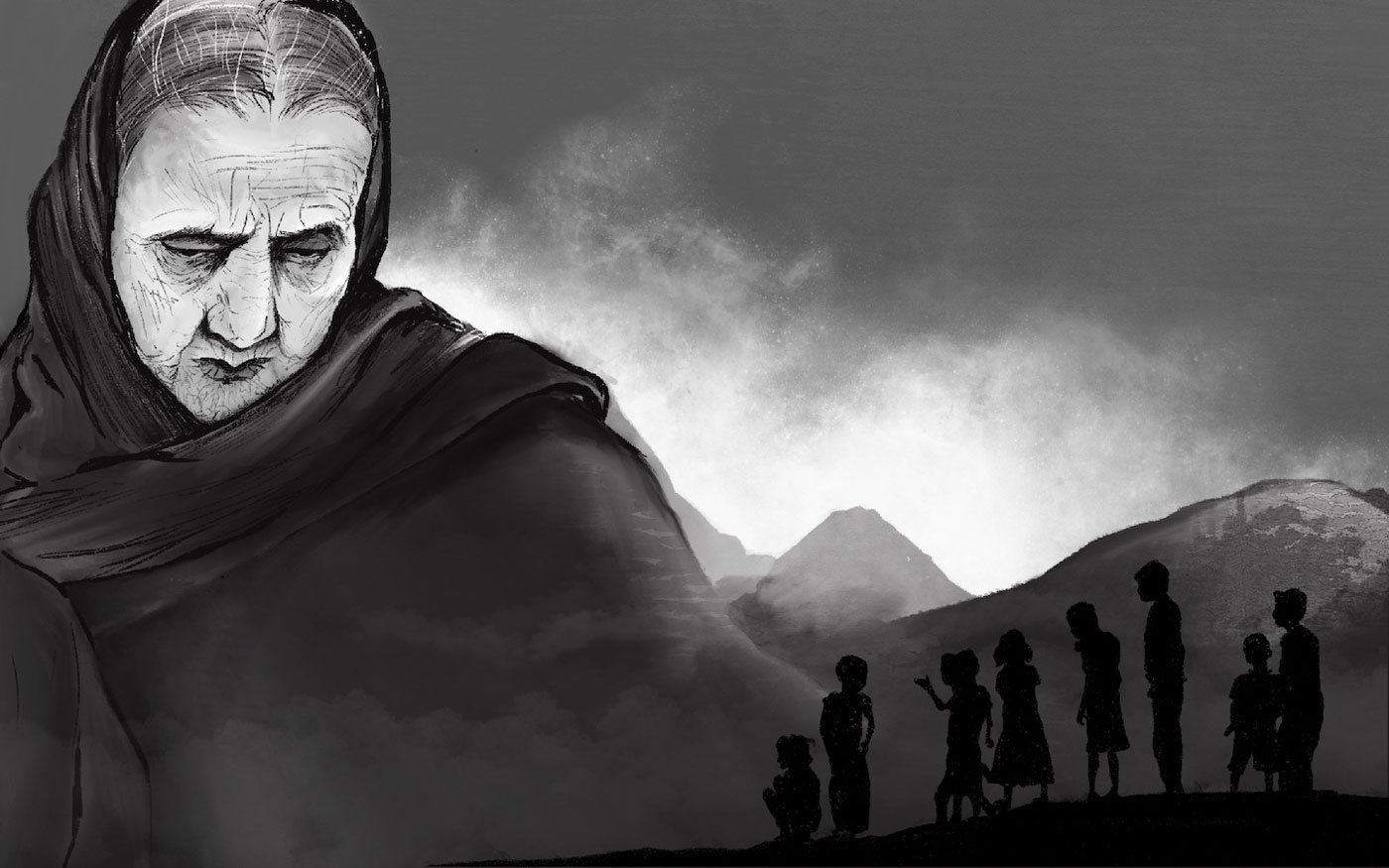
In Haryana’s Biwan village, access to contraception among the Meo Muslims is uphill due to cultural factors, inaccessible health services and indifferent providers – trapping women in a cycle of childbirth
At 82, Aarifa has seen everything. Her Aaadhar card says she was born on January 1, 1938. Aarifa doesn’t know if that’s accurate, but she remembers that as a 16-year-old she became the second wife to a 20-something Rizwan Khan and came to the village of Biwan in Haryana’s Nuh district. “My mother got me married to Rizwan after my elder sister [Rizwan’s first wife] and her six children died in a stampede during Partition,” recalls Aarifa (not her real name).
She also has faint memories of the time Mahatma Gandhi came to a village in Mewat to ask the community of Meo Muslims not to leave for Pakistan. Every December 19, Meo Muslims in Haryana commemorate Gandhi’s visit to Ghasera village in Nuh as Mewat Diwas (Nuh was called Mewat until 2006).
Around 80 kilometres from the national capital, Biwan, in Ferozepur Jhirka block, is located at the foothills of the Aravalli hills bordering Haryana and Rajasthan. The road from Delhi to Nuh runs through southern Haryana’s Gurugram, a financial and industrial hub with the third-highest per capita income in India, and brings you to the 44th most backward district in the country. Here, green fields, arid hills, poor infrastructure and water scarcity mark the lives of many like Aarifa.
The Meo Muslim community lives across much of this part of Haryana and some parts of neighbouring Rajasthan. Muslims constitute 79.2 per cent of the population of Nuh district (Census 2011).
In the 1970s, when Aarifa’s husband Rizwan started working in the sand, stone and silica mines that are walking distance from Biwan, Aarifa’s world was circumscribed by the hills, and her major task was fetching water. After Rizwan passed away, 22 years ago, Aarifa laboured in the farms to provide for herself and her eight children, earning, she says, as little as Rs 10 to Rs. 20 a day. “Our people say have as many children as you can, Allah will provide for them,” she adds.
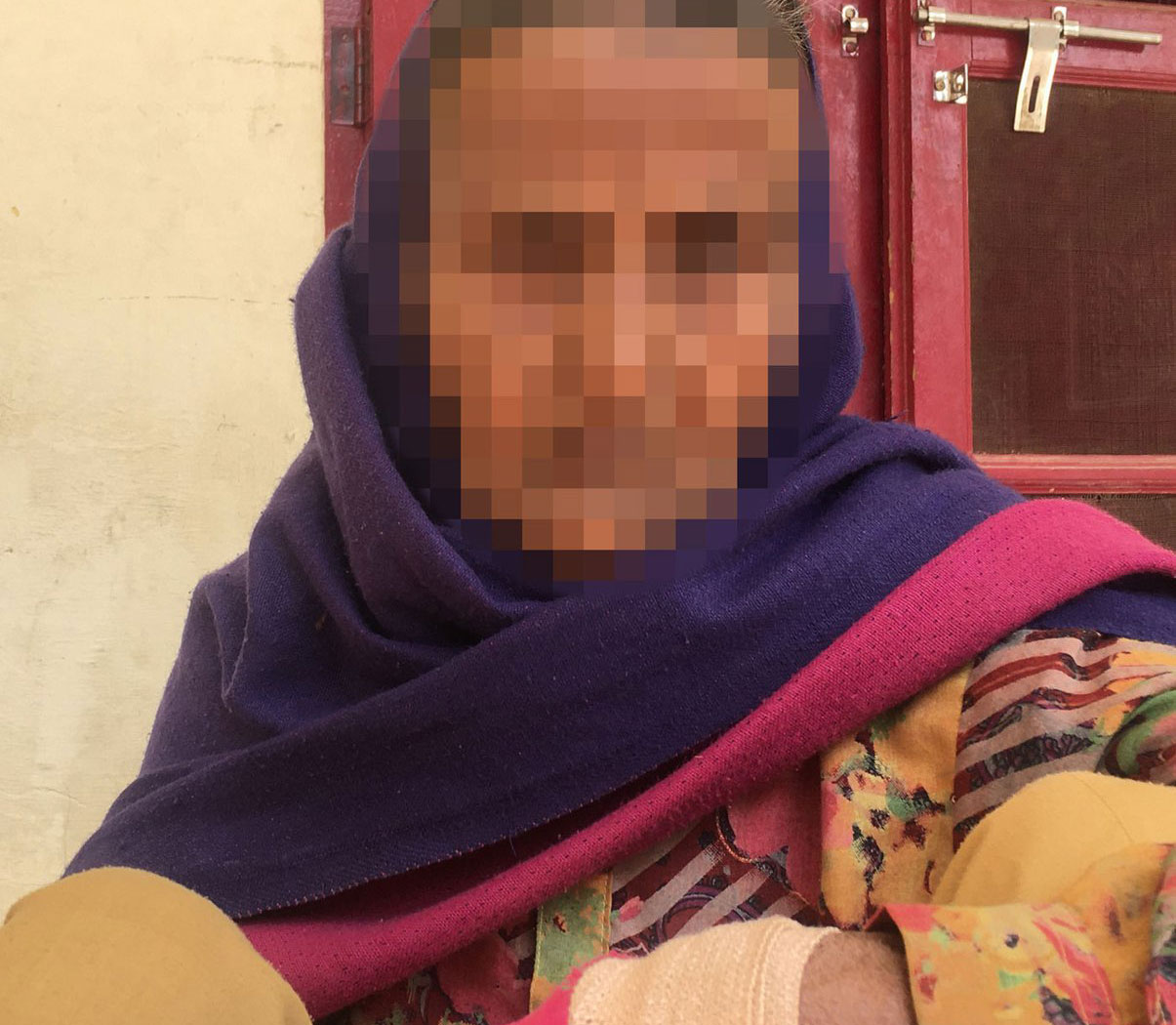
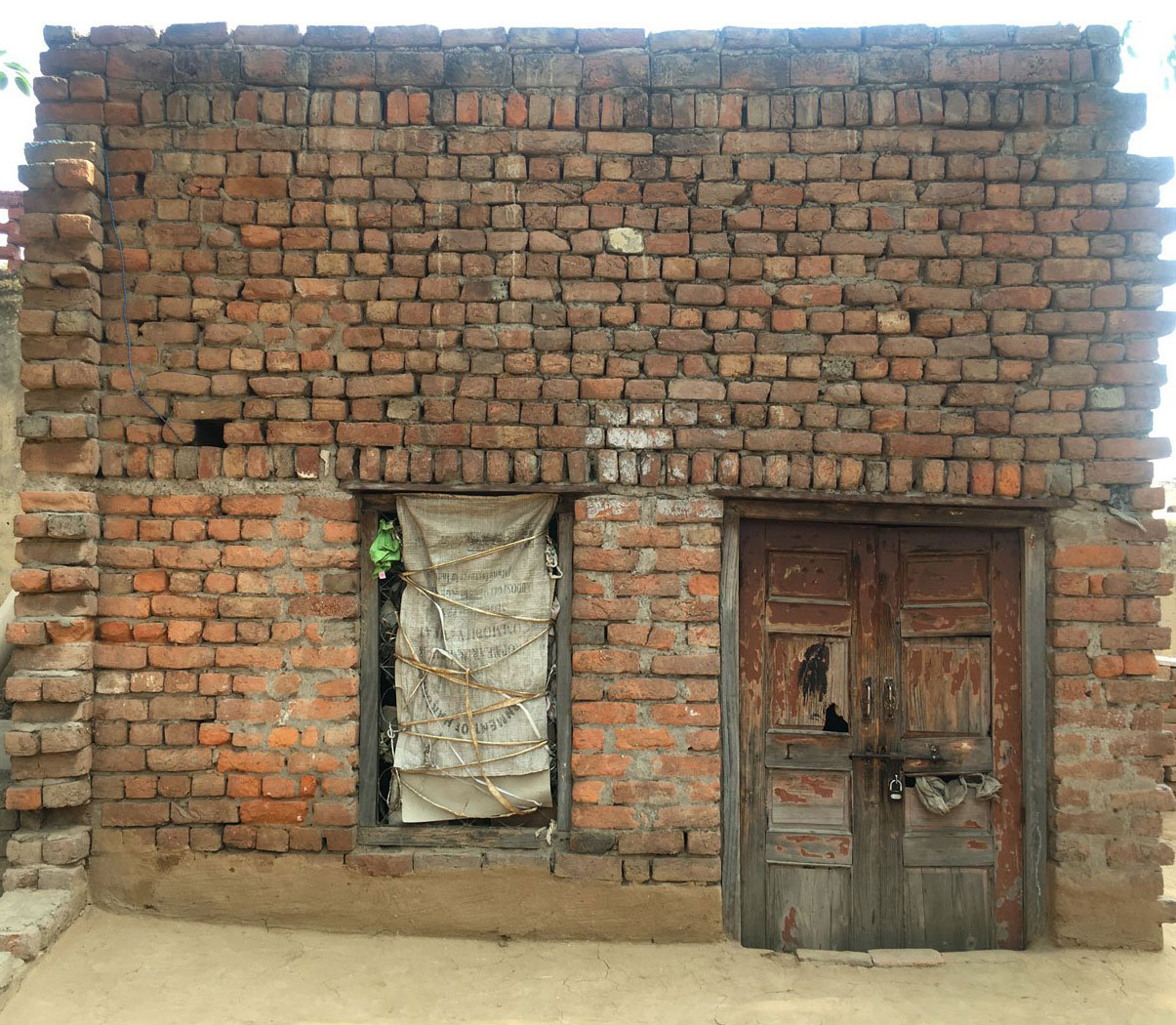
Aarifa: ‘Using a contraceptive is considered a crime’; she had sprained her hand when we met. Right: The one-room house where she lives alone in Biwan
Her four daughters are married and live in different villages. Her four sons live nearby with their families; three of them are farmers, one works in a private firm. Aarifa prefers to live alone in her one-room house. Her eldest son has 12 children. Aarifa claims that, like her, none of her daughters-in-law use any form of contraception. “After some 12 children it stops on its own,” she says, adding that “using a contraceptive is considered a crime in our religion.”
While Rizwan died of old age, many women in Mewat district lost their husbands over the years to tuberculosis. Deaths due to TB have been recorded among Biwan’s 957 residents too. Among them was Bahar’s husband Daanish (not their real names). In the house in Biwan that she has lived in for over 40 years, she saw his health deteriorate due to tuberculosis in 2014. “He had chest pains and often spilled blood while coughing,” she recalls. Bahar, around 60 now, and her two sisters, who live in adjacent houses, all lost their husbands to TB that year. “People say it happened because it was our destiny. But we blame the hills for it. These hills have ruined us.”
(In 2002, the Supreme Court banned mining activities in Haryana following large scale devastation in Faridabad and neighbouring areas. The SC ban order is only for environmental damage. It makes no mention of TB. Only anecdotal accounts and a few reports link the two.)
At the primary health centre (PHC) closest to Biwan, in the district headquarters of Nuh, seven kilometres away, staff member Pawan Kumar shows us a tuberculosis-related death recorded in 2019, that of 45-year-old Waiz. According to the records, seven other men in Biwan are suffering from TB. “There could be more, as many do not visit the PHC here,” Kumar adds.
Waiz was married to 40-year-old Faaiza (not their real names). “No work was available in Nauganwa,” she tells us, of her village in Bharatpur district of Rajasthan. “My husband moved to Biwan after he found out about the work at the mines. I joined him a year later, and we built our home here.” Faaiza gave birth to 12 children. Four died due to premature births. “One barely learnt to sit, and I had another child,” she says.
She and Aarifa now survive on a widow’s pension of Rs. 1,800 a month. Work seldom comes their way. “If we ask for work, we are told you are too weak. They will say this is 40 kilos, kaise uthayegi yeh? [How will you lift this?],” says 66-year-old widow Hadiyah (not her real name), imitating the taunts they often hear. So every rupee of the pension is saved. The 10 rupees it costs to hire an autorickshaw to the PHC in Nuh for even the most basic of medical needs are saved by walking the entire distance and back. “We gather all the old women who wish to see a doctor. Then we walk along. We sit plenty of times along the way to rest and then continue. The entire day will go in this,” Hadiyah says.
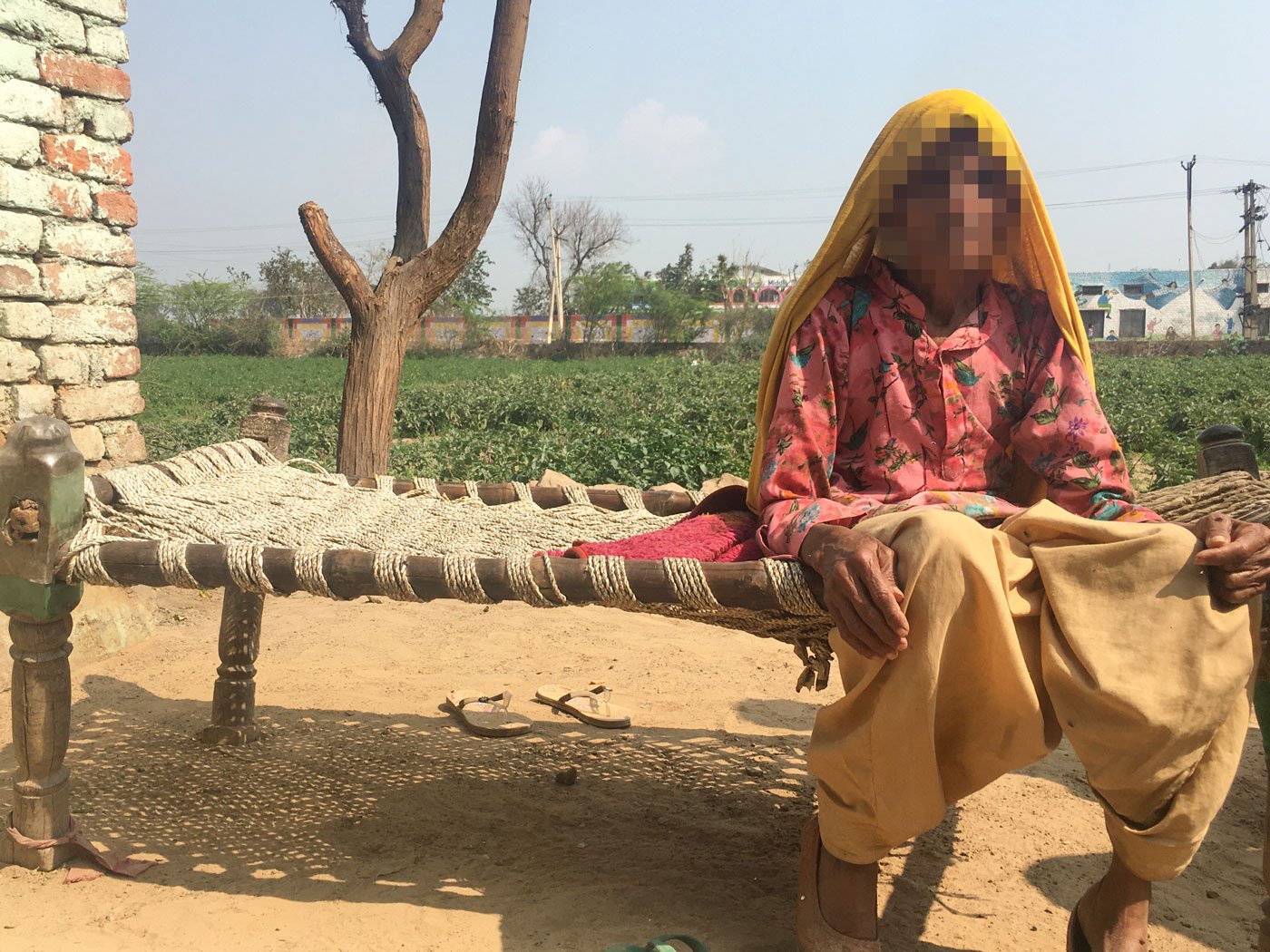
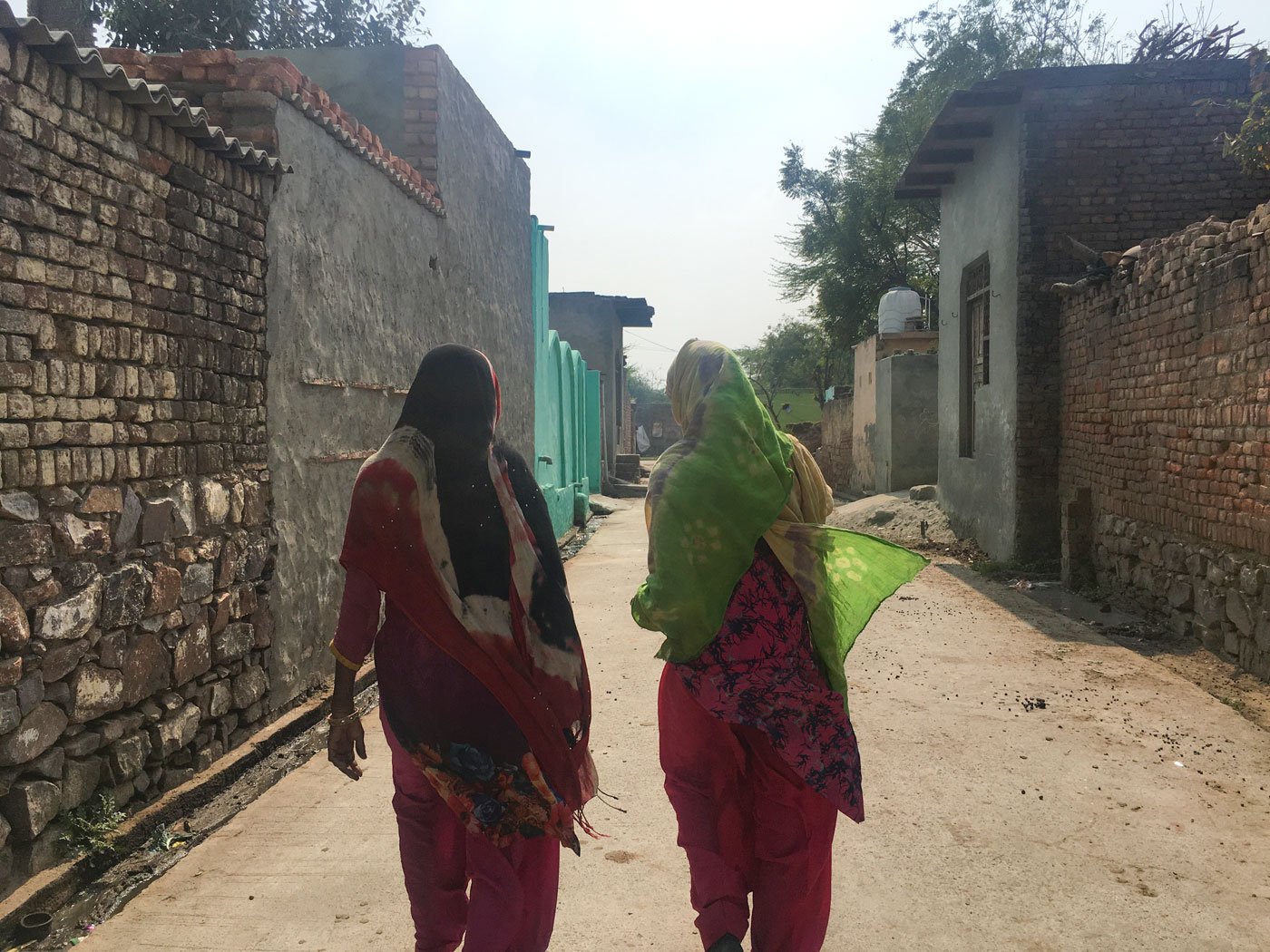
Bahar (left): ‘People say it happened because it was our destiny. But we blame the hills’. Faaiza (right) ‘One [child] barely learnt to sit, and I had another’
As a child, Hadiyah never went to school. The fields in Sonipat, Haryana, where her mother laboured, taught her everything, she says. She was married to Fahid at the age of 15. When Fahid started working at the mines in the Aravalli hills, Hadiyah’s mother-in-law gave her a khurpa (a cutting tool) to start weeding on farms.
When Fahid passed away from tuberculosis in 2005, Hadiyah’s life became all about labouring in the fields, borrowing money and repaying it. “I used to labour in the fields in the day, and take care of the kids at night. Fakirni jaisi haalat ho gayee thi [I was reduced to the life of a fakir],” she adds.
“I gave birth to a daughter a year into the marriage. The rest were born every two or three years. Pehle ka shuddh zamaana tha [Everything was pure earlier],” Hadiyah, mother of four boys and four girls, says, referring to both the silence around reproductive issues and the lack of awareness about reproductive interventions in her time.
At the community health centre (CHC) in Nuh, Govind Sharan, senior medical officer, also remembers those times. Thirty years ago, when he started working at the CHC, people were uncomfortable about discussing anything related to family planning. That’s not entirely the case now. “Earlier, families would get angry if we discussed family planning. In the Meo community now, the decision to use a copper-T is mostly taken by a couple. But they still prefer to keep it hidden from the elders in the family. Often women would request us not to disclose this to their mothers-in-law,” Saran adds.
According to the National Family Health Survey-4 (2015-16), only 13.5 per cent of currently married women aged 15-49 use any kind of family planning method in Nuh district (rural). The total fertility rate (TFR) in Nuh district is a high 4.9 (Census 2011), compared to 2.1 for Haryana state. In rural areas of Nuh district, only 33.6 per cent of women aged 15-49 years are literate, almost 40 per cent of women aged 20-24 are married before the age of 18, and only 36.7 per cent have had institutional deliveries
Intrauterine devices like the copper-T are used by barely 1.2 per cent women in rural areas of Nuh district. Part of the reason is that the copper-T is seen as a foreign object in the body. “And inserting any such object in one’s body is against their religion is what they will often say,” says Sunita Devi, the auxiliary nurse midwife (ANM) at the Nuh PHC.
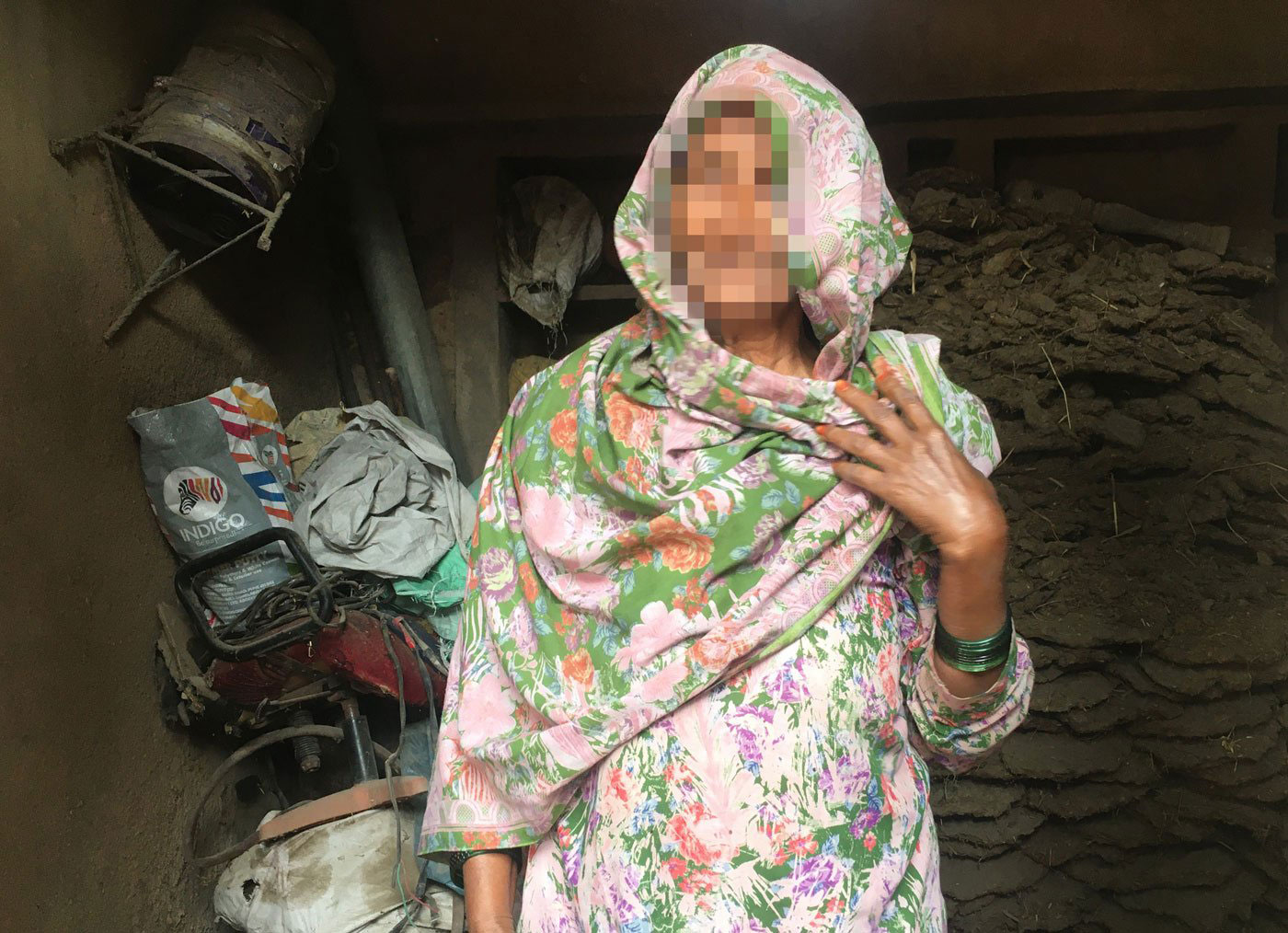
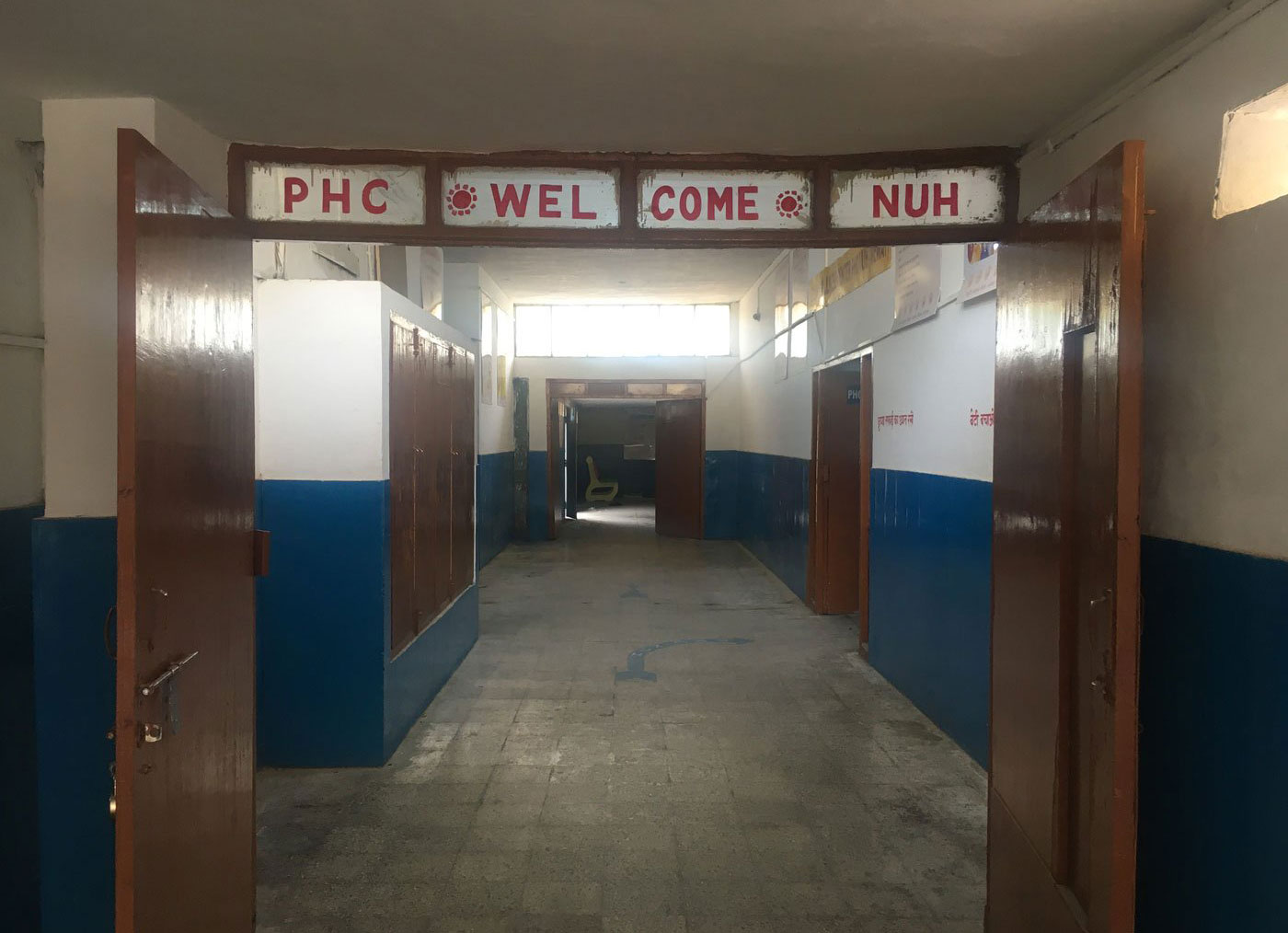
Hadiyah (left) at her one-room house: ‘We gather all the old women who wish to see a doctor. Then we walk along’. The PHC at Nuh (right), seven kilometres from Biwan
Even so, as the NFHS-4 points out, the unmet need for family planning – that is, women not using contraception but wanting to postpone the next birth (through spacing) or to stop birthing (limiting) – stands fairly high, at 29.4 per cent (rural).
“Due to socioeconomic reasons, as Nuh has a predominantly Muslim population, the inclination towards family planning methods has always been low. This is why the unmet need is high in the region. Cultural factors have a role to play. They tell us, bachche toh Allah ki den hai [Children are the gift of god],” says Dr. Ruchi, medical officer of family welfare, Haryana (she uses only a first name). “A wife will take the pill regularly only if the husband cooperates and procures them for her. With the copper-T, a [tell-tale] thread hangs out. However, the situation is improving following the launch of the injectable contraceptive Antara. There is no male interference in this particular method. A woman can visit the facility and get her dose.”
Antara, an injectable contraceptive, provides three months’ protection with a single dose and has gained popularity in Haryana, which was the first state to adopt injectable contraceptives in 2017. Since then, over 16,000 women have used it, says a news report, 92.3 per cent of the target of 18,000 the department had set for itself in 2018-19.
While an injectable contraceptive helps address concerns of religious proscription, other factors also inhibit delivery of family planning services, especially in minority communities. Studies have indicated that the indifferent attitude of healthcare providers and the long waiting time at healthcare facilities also prevent women from actively seeking advice on contraception.
In a 2013 study carried out by CEHAT (Centre for Enquiry into Health and Allied Themes, based in Mumbai) to explore religion based discrimination in health facilities based on perceptions of women from different communities; it was found that though discrimination existed for all women based on class; Muslim women experienced it mostly about their choices of family planning, negative remarks about their communities and condescending behaviour in labour rooms.
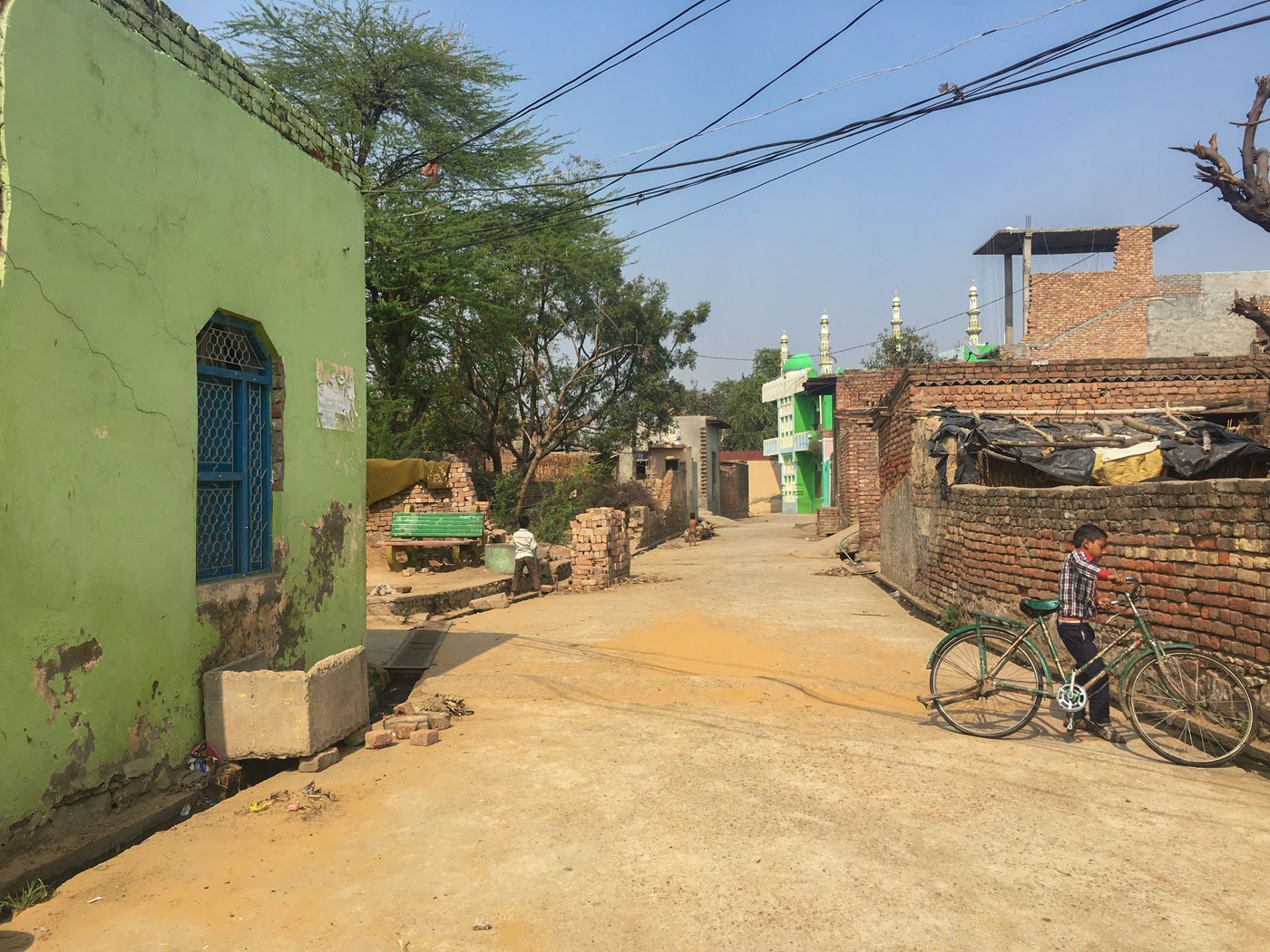
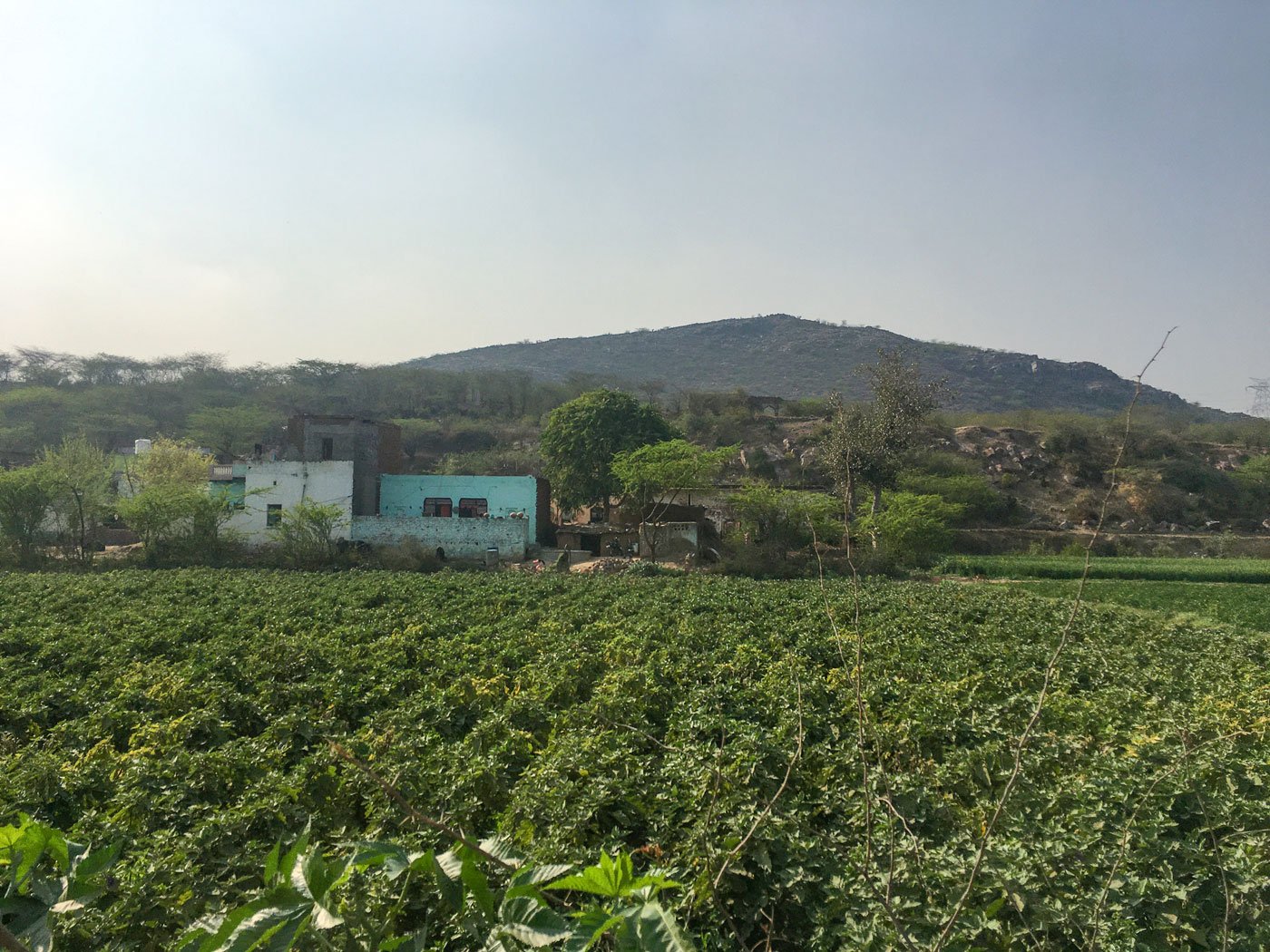
Biwan village (left) in Nuh district: The total fertility rate (TFR) in Nuh is a high 4.9. Most of the men in Biwan worked in mines in the nearby Aravalli ranges (right)
Sangeeta Rege, coordinator at CEHAT says, “The concern is that though the govt programs boast of basket of choice approach for contraceptives; it is often seen that the health providers make these decisions for all women in general; there is a need to understand constraints faced by women belonging to Muslim community and engaging them to discuss suitable contraceptive choices
In Nuh, despite the high unmet need for family planning, NFHS-4 (2015-16) points out that only 7.3 per cent of women who had never used contraceptives in rural areas had ever been approached by a health worker to discuss family planning.
Suman, a 28-year-old accredited social health activist (ASHA) who has worked in Biwan for the last 10 years, says she often leaves it to women to make up their minds about family planning and then communicate their decision to her. The dismal infrastructure in the area is a huge barrier too in accessing healthcare, Suman says. It affects all women, but the elderly the most.
“We have to wait for hours to catch a three-wheeler to reach the PHC in Nuh,” Suman says. “It gets difficult to convince anybody to visit a centre for any health issue, let alone family planning. They find it tiresome to walk. I am actually helpless.”
It’s been the same here for decades – not much has changed in this village in the 40-plus years she has lived here, says Bahar. Seven of her children died due to premature births. The six that followed all survived. “There were no hospitals here at the time,” she says. “And we still do not have a health centre in the village.”
Cover illustration: Priyanka Borar is a new media artist experimenting with technology to discover new forms of meaning and expression. She designs experiences for learning and play, juggles with interactive media, and also feels at home with traditional pen and paper.
PARI and CounterMedia Trust’s nationwide reporting project on adolescent girls and young women in rural India is part of a Population Foundation of India-supported initiative to explore the situation of these vital yet marginalised groups, through the voices and lived experience of ordinary people.
Want to republish this article? Please write to zahra@ruralindiaonline.org with a cc to namita@ruralindiaonline.org

